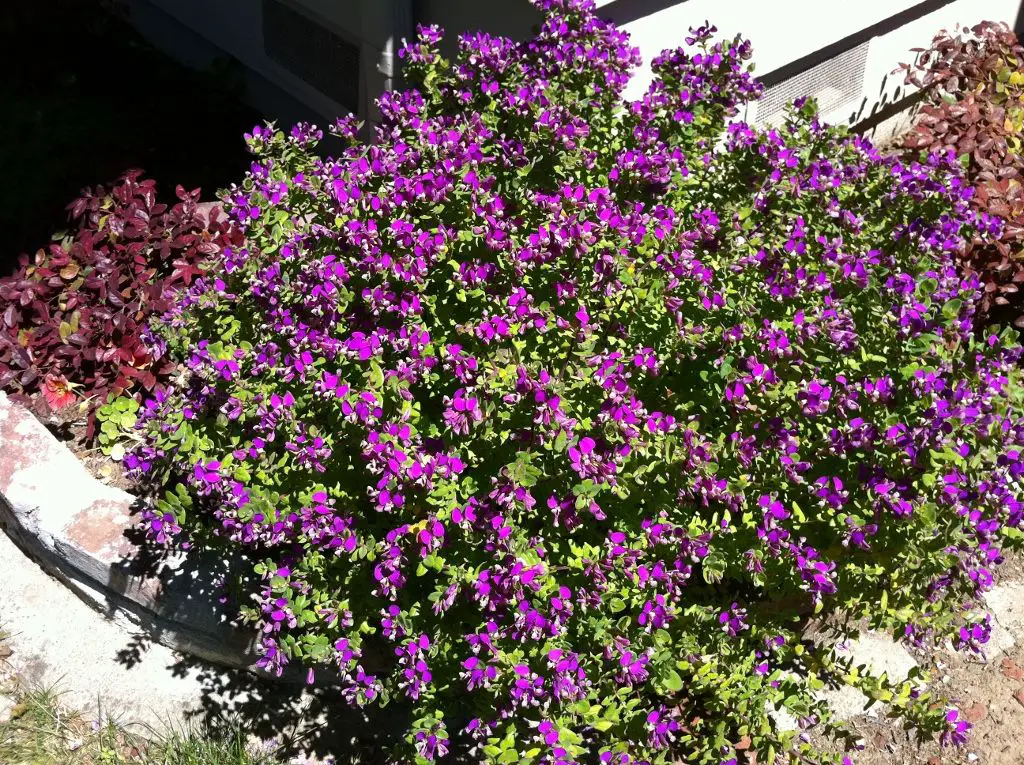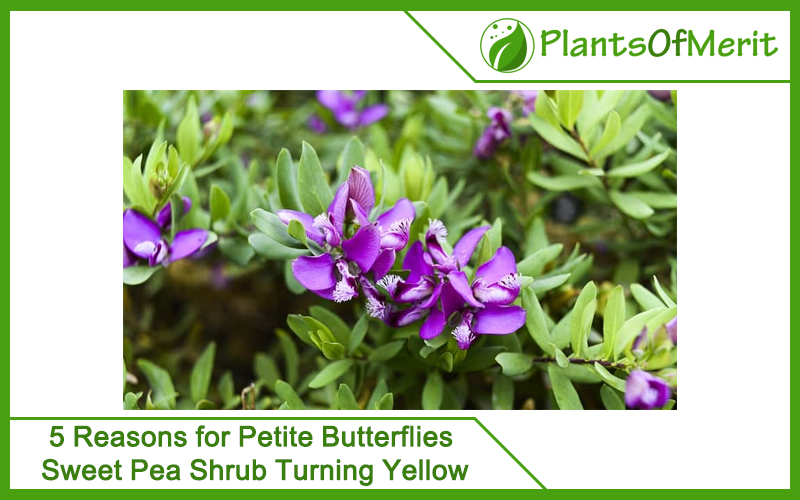Petite butterflies sweet peas are a kind of evergreen plant which produce flowers all through the year. There is no particular season for this plant to bloom. You can easily get this plant at a nearby plant shop and get it planted in your garden to make your home look aesthetic. However, it is all fine till your plant starts showing signs of poor health. The most symptom of your plant being in improper health is the plant turning yellow.

If you’re noticing the sudden color change of your petite butterflies and sweet peas shrubs, you must be looking for the reasons. Here are some of the most commonly diagnosed reasons for these sweet pea shrubs becoming yellow. Read below to know the reasons and solutions:
1. Overwatering
A sweet pea plant can become yellow usually due to excessive watering. They like to be moist in soil but they can’t thrive properly if their roots get waterlogged. Also, if you use very cold water, your sweet plants may get into shock for some time. However, the good thing is that when getting the right quantity of water, the petite butterflies’ sweet pea plants will not turn yellow and produce green leaves instead.

Solution
Keep watering your plants once a week based on the weather condition. Make sure that you let the soil be a bit moist. In the winter season, reduce watering and use lukewarm water. In the summer season, water them in the early morning. This will help the plant produce good flowers. But, the amount of water largely depends on the size of the plant and the climate of your region.
2. Fungal disease
Ramularia and powdery mildew leaf spots are some of the most commonly found bacterial diseases which affect sweet peas. Powdery mildew starts initially with the powder-like growth seen on foliage but if this disease grows, leaves will turn yellow if there’s no proper treatment whereas, Ramularia leaf spots are a kind of fungal disease seen in sweet pea plants. It creates big yellow spots all over the lower part of the plant. If the infection is severe, all leaves of this plant start dropping off.

Solution
To treat this case, you must use suitable fungicides for the petite butterflies’ sweet peas and use them on your plant whenever you find symptoms. When using the fungicide you must ensure that you follow all directions mentioned on the packaging. If the dosage is not right, it can cause damage to your plant.
Water only the root of your plant. As these plants are voluminous, you shouldn’t water the leaves. If leaves get wet, fungal growth will be encouraged. If there’s a fungal problem in the soil, change the area where you grow sweet peas every year.
3. Lack of nutrients
One of the most ordinary causes for yellow leaves on petite butterflies and sweet peas plants is the lack of nutrients. You might see a lack of potassium, manganese, and nitrogen as they can cause the yellowing of leaves of your sweet pea plant. These nutrients are very important for photosynthesis.

One thing about these petite butterflies sweet peas is that they don’t require nutrients in very high amounts. If you use too much fertilizer, there can be the toxicity of nutrients. As an outcome, the roots become burnt and cause wilting of the plant.
Solution
Give your sweet pea plants a good all-purpose liquefied fertilizer at least once in the entire spring season. Make sure that you don’t over-fertilize. If you do that, your plants will become voluminous foliage but will not bloom properly. Sometimes, a lack of nutrients happens due to the high pH level of the soil. Test the pH value of the soil using a test kit and make the necessary changes with acid-based fertilizer if the nature of the soil is alkaline.
4. Viral diseases
Spotted mosaic and wilt are the two commonly found viral infections in the petite butterflies sweet peas plant. This makes the leaves yellow. In the case of viral wilt infection, the leaves firstly turn yellowish but then they become brown and start wilting off. Also, in mosaic infection, the leaves show yellowish and greenish spots. Both viral infections can be traditionally by tiny insects such as thrips and aphids so; you must treat this infection the moment you find it.

Solution
Spotted mosaic and wilt can be very dangerous for your petite butterflies and sweet peas plants. So, you must prevent the spread of these infections first. That is the reason why you must take care of the insects rapidly and stop them from infecting your plant later in the future. Use a suitable insecticide and don’t miss out on directions mentioned on the package. Don’t use too much Nitrogen-based fertilizer as it can increase the foliage. These insects get more attracted to new foliage.
5. Inadequate sunlight
Sweet peas plants love warmth. This means that they require a great amount of sunlight to thrive. If your petite butterflies sweet peas plants are kept in shady areas, their leaves will become yellow as they won’t get the required amount of sunlight.

Solution
Keep your petite butterflies sweet peas plant in such a place where they can get a minimum of 6 hours of sunlight daily. It is the best thing you can do to ensure the proper blooming of your plants. If you’ve already placed them in a shaded area, uproot the plant and replant in a sunny place.
Conclusion
These are some of the most common way your petite butterflies and sweet peas plants are becoming yellow. Every reason has been explained individually along with the right solution. All you need to do is find out the reason and use the proper solution to eradicate the cause. Make sure to give immediate attention to the problem as soon as you can sense it. If it gets too late, your plant may get severely damaged. So, it’s better to start working on the solution as soon as you confirm the cause.

